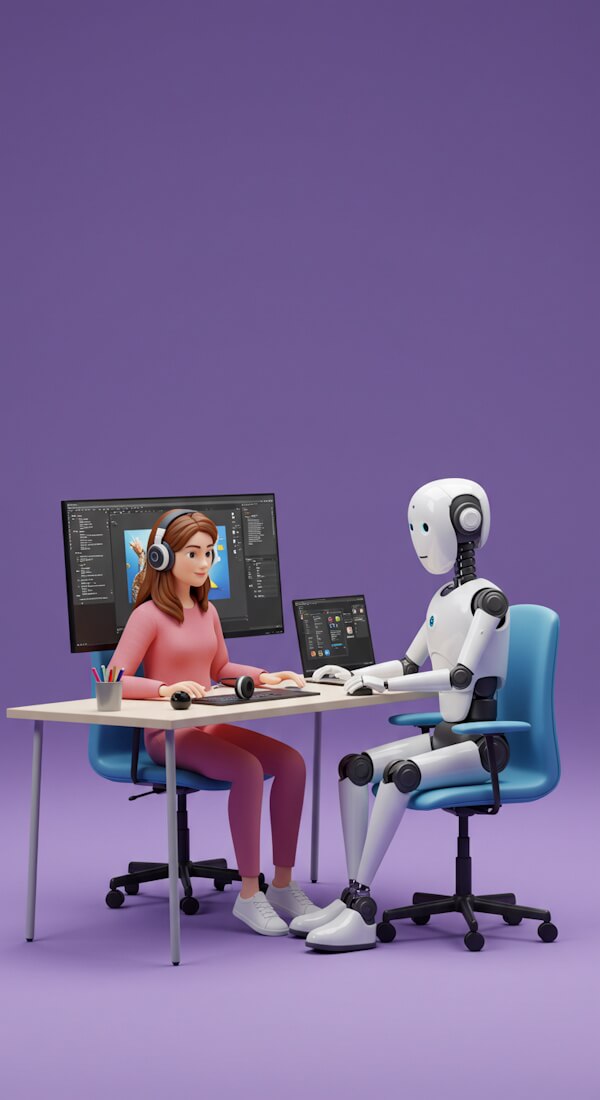Artificial Intelligence (AI) has transcended its status as a mere buzzword to become a transformative force. It shapes how authentic content is created across various industries, including journalism, marketing, and entertainment.
AI tools, such as natural language processing algorithms and machine learning systems, facilitate the generation of:
- Compelling articles,
- Personalized marketing messages
- Intricate creative media like videos and music.
These technological advancements streamline the content generation process, allowing creators to produce high-quality work in a fraction of the time. They also open the door to innovative techniques and data-driven insights.
Still, this significant shift also brings some challenging problems, especially when making content that’s truly original, honest, and fair.
For example, with so much stuff online, it’s easy to copy someone else’s work without even trying.
Plus, it can be hard to tell if what you’re reading was made by a real person or just a clever bot.
Writers and creators must consider these issues and make smart choices. Otherwise, they risk losing trust with their audience.
Writers and creators face questions about the implications of using AI in their work, such as the potential dilution of their unique voices and the reliability of AI-generated content.
As AI technology evolves rapidly, industry stakeholders must develop robust methods to identify AI-generated content.
This ensures that it aligns with authenticity standards and preserving the trust of audiences who value sincerity and creativity in their media consumption.
Furthermore, ongoing discussions about regulatory frameworks and best practices are vital to navigating the ethical landscape of AI implementation in content creation.
Understanding Authentic Content
Authentic content is at the heart of engaging with audiences—the driving force behind meaningful connections.
It resonates with readers because it delivers genuine thoughts and unfiltered emotions and nurtures an organic trust that is difficult to replicate synthetically.
Authentic content represents a commitment to originality, maintaining a personal voice, and ensuring content remains plagiarism-free.
As AI slips into the way we make content, it’s becoming tough to tell the difference between what’s written by a person and what’s pumped out by a machine.
Creators must understand authenticity more deeply to distinguish their work and build relationships with their audience.
The Role of AI in Authentic Content
AI operates as a double-edged sword in the realm of content authenticity. On the one hand, it is an incredible asset, offering writers enhanced tools to streamline and refine their creative ideas effortlessly.
AI can analyze massive data sets, uncover patterns, and provide insights that might otherwise remain unseen, all of which contribute to elevated content value.
On the other hand, the simplicity with which AI can produce content threatens originality and diversity in thought.
When content creators lean too much on AI, their work can start to look the same as everyone else’s.
Original ideas take a back seat; everything blurs together like a sea of bland oatmeal. If you want to avoid writing the digital version of plain toast, it pays to stay sharp and mix in your own voice.
The trick is to let AI help with research and brainstorming, not to lean on it so hard that you lose your own voice. Use it as a handy sidekick, not the main act, and your work stays fresh and honest.
Balancing AI and Human Inputs
Balancing AI with human creativity means using what each does best. Let machines handle data and patterns while people bring fresh ideas and emotion.
Think of it like a band, where each player needs to play their part for the music to sound good. Letting both sides shine leads to the best results.

Human writers are essential for infusing content with emotional depth and personal insights that create resonance with readers.
Meanwhile, AI excels at handling repetitive and time-consuming tasks, freeing up writers to focus on creativity.
The collaborative efforts between AI and human writers enhance content quality and efficiency.
This creates a give-and-take situation in which AI’s sharp eye for patterns helps bring the writer’s creative ideas to life.
When you mix creativity with new tech, you get content that’s more fun to read and keeps people interested. It keeps the heart of original ideas alive while still using smart tools to make things even better.
Guidelines for Creating Authentic Content
Creating content that truly feels genuine demands adherence to mindful strategies and conscious efforts. Here are some guidelines:
- Stay true to personal style: Let the uniqueness of your voice shine through AI assistance, ensuring that each piece you create mirrors your inherent individuality.
- Use AI tools for research: Employ AI to gather information and streamline processes, but resist the temptation to let it be the primary source of your creative inspiration.
- Consistent content review: Regularly audit your work to ensure it aligns with your authenticity standards and remains fresh, original, and impactful.
- Avoid over-reliance on AI: Be wary of automated processes that may strip away the originality that sets your work apart, reminding yourself that mechanization cannot replace genuine creativity.
Following the above guidelines ensure your content maintains its intended sincerity, connecting authentically with audiences who crave genuine interactions in this digital age.
Tools for Detecting AI Content
To maintain the integrity of their work, content creators can turn to various tools designed to identify and review AI-generated text.
These tools serve as a critical checkpoint, auditing originality and style to ensure content remains true to its intended message.
There are plenty of top AI checkers out there. These tools stand out because they help you determine if content is real or made by a bot.
They also provide creators with the necessary data to seamlessly blend technology with creative processes.
Future Trends in AI and Content Creation
AI keeps growing in content creation. New tools keep getting smarter and can copy how people write, sound, and even joke.
In the next few years, expect these tools to get even better at sounding like real people. Soon, it may be tough to tell if a computer or a person wrote that blog post or social update.
Writers may need to step up their game or risk being outdone by a robot with a keyboard and a sense of humor.
This continued evolution prompts creators to adapt persistently, inventing innovative ways to maintain authentic expression.
With these technological advancements, creative professionals can enhance productivity, streamline workflows, and generate innovation.
Real human ideas still matter most. When people work together, results get stronger and more creative.
Content creation has a bright future full of new chances for anyone willing to try something different. If you like to think outside the box, now’s your time.
Final Thoughts About Authentic Content and AI
Artificial intelligence (AI) offers substantial opportunities for revolutionizing content creation across various fields, including marketing, and engages audiences.
However, integrating AI must be done cautiously to avoid pitfalls like compromised authenticity and ethical dilemmas.
Creative professionals can boost productivity, optimize workflows, and spark innovative ideas by strategically and responsibly adopting AI technologies, such as natural language processing and machine learning.
Furthermore, maintaining a careful balance between technological progress and genuine human connection is vital.
This equilibrium enables content creators to craft material that captivates audiences while preserving originality and emotional depth.
Thus, content creators ultimately enhance the digital environment while upholding the principles of creativity and integrity.

As a Visual Digital Marketing Specialist for New Horizons 123, Julie works to grow small businesses, increasing their online visibility by leveraging the latest in internet and video technologies. She specializes in creative camera-less animated video production, custom images, content writing, and SlideShare presentations. Julie also manages content, blog management, email marketing, marketing automation, and social media for her clients.





0 Comments